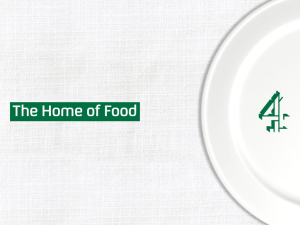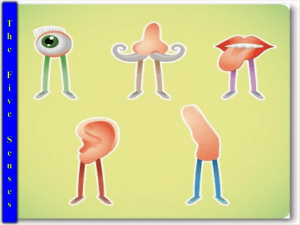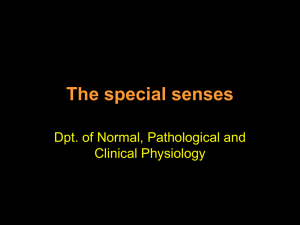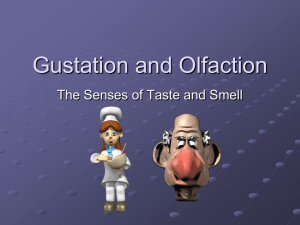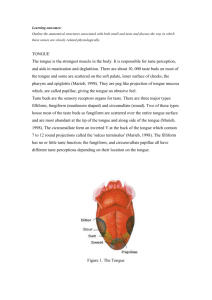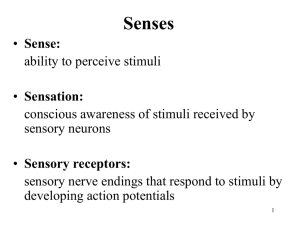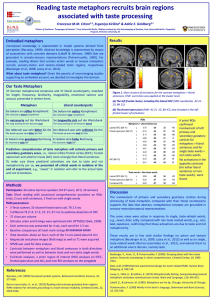File
advertisement
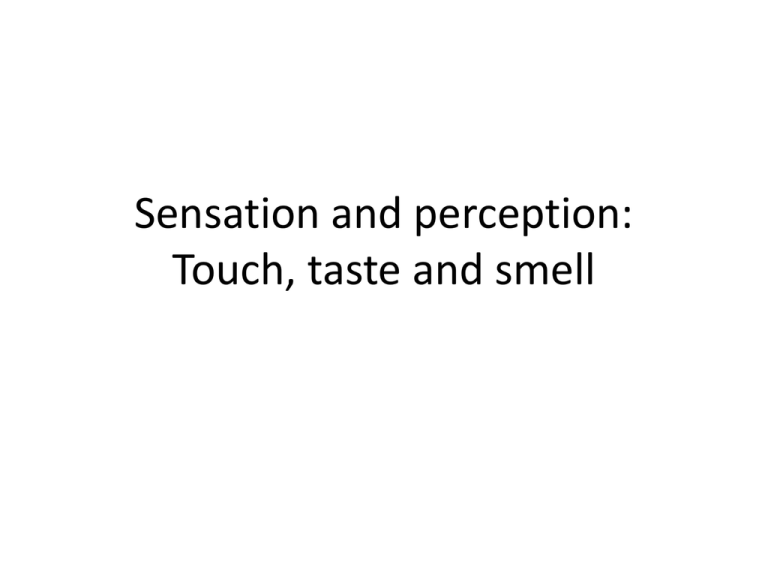
Sensation and perception: Touch, taste and smell How touchy are you? In this simple lab you will work with a partner to answer the following questions. • How many different types of touch receptors are there on the body? • How are touch receptors distributed? • What types of sensation/stimuli is skin sensitive to? Layers of skin The skin is a densely layered organ with embedded touch receptors, sweat glands, hairs etc. Types of touch receptors: • Light pressure • Deep pressure • Pain • Temperature Touch lab: Part 1 • Pair up: experimenter and subject • Subject: offer your arm, hands, neck, face (not near eyes), back and legs for experimentation! • Experimenter will test the subject’s perception of: 1. Light touch – with a hair 2. Deep touch (pressure) – with curved part of a paperclip (NOT sharp side) 3. Thermoreception (temperature) – with a heated or cooled paperclip 4. Two-point discrimination – with the pointy ends of two paperclips Questions – write and answer 1. How many different types of touch receptors are there on the body? 2. How are touch receptors distributed? 3. What types of sensation/stimuli is skin sensitive to? 4. Which parts of the body that we tested today are most sensitive and why? 5. Imagine you couldn’t feel any pain. How long would you survive? 6. What are some errors or inconsistencies in the way this lab was conducted? Taste: Taste – chemical sense • Experimenter dips CLEAN cotton bud into a solution • Rubs on a zone (shown in diagram) of tongue. Ask if can taste. Write + or – in diagram to document if subject can taste or not. • Repeat using NEW cotton bud but same solution. Try all other zones on tongue. Olfaction – chemical sense • Place clove oil-soaked cotton bud one foot under nose. Block left nostril, inhale deeply with right and smell. Gently fan the aroma towards your nose. • Record time it takes till you can no longer smell it, or not much. • Change to peppermint oil. Repeat process. Jelly bean discrimination activity • Pair up, one is experimenter, other is subject. • Experimenter feeds subject. The swa roles. • Subject must eat bean – Seeing it first – Without seeing if first – ALWAYS start chewing bean with nose plugged, try to guess flavor – Unplug nose – guess again – Try two beans at once – can tell difference? Sense of Taste: the microvilli in taste cells have receptor proteins that detect molecules that allow the brain to distinguish between different tastes. in adults nearly 3,000 taste buds are located on the tongue Most taste buds are located on the wall of the papillae (bumps on tongue) There are four primary types of taste: sour, sweet, salty and bitter Each type of taste is sensitive to different taste buds which are located in different places. The taste bud opens at a taste pore The taste bud has supporting cells and elongated taste cells that end in microvilli. Molecules bind to receptor proteins, allowing nerve impulses to generate in sensory nerve fibers that go to the brain. When reaching the gustatory cortex, they are then interpreted as a unique taste.


